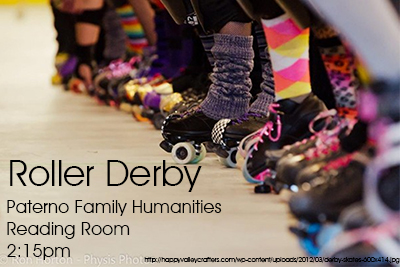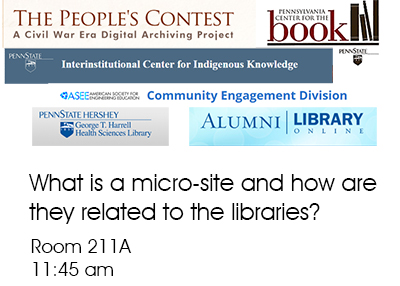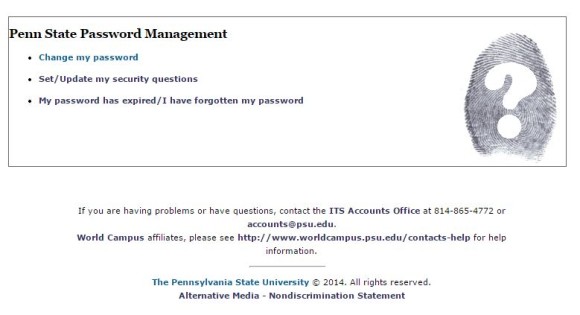University Park, PA–Penn State’s University Libraries and the Pennsylvania Center for the Book are pleased to announce that “This One Summer ” by Mariko Tamaki (writer) and Jillian Tamaki (artist), published by First Second, an imprint of Roaring Brook Press, has won the 2015 Lynd Ward Prize for Graphic Novel of the Year.
“It’s an honor to have this book recognized and we are thrilled to accept,” said co-creators Mariko Tamaki and Jillian Tamaki. “Mariko Tamaki and Jillian Tamaki are major talents, and it’s wonderful that the power of their work is resonating across the whole literary landscape,” says Mark Siegel, editorial director of First Second.
“This One Summer,” says the jury, “is a beautifully drawn, keenly observed story. It is told with a fluid line and a sensitive eye to the emblematic moments that convey character, time, and place—the surf at night, the sound of flip-flops, a guarded sigh—all at the meandering pace of a summer’s vacation. The Tamakis astutely orchestrate the formal complexities of the graphic novel in the service of an evocative, immersive story. At first blush a coming of age story centered on two young girls, the book belongs equally to all its cast of characters, any of whom feel realized enough to have supported a narrative in their own right. Striking, relatable, and poignant, this graphic novel lingers with readers long after their eyes have left the pages.”
The Lynd Ward Graphic Novel Prize honors Ward’s influence in the development of the graphic novel and celebrates the gift of an extensive collection of Ward’s wood engravings, original book illustrations and other graphic art donated to Penn State’s University Libraries by his daughters Robin Ward Savage and Nanda Weedon Ward. Between 1929 and 1937, Ward published his six groundbreaking wordless novels: “Gods’ Man,” “Madman’s Drum,” “Wild Pilgrimage,” “Prelude to a Million Years,” “Song without Words” and “Vertigo.”
Sponsored by Penn State’s University Libraries and administered by the Pennsylvania Center for the Book, an affiliate of the Center for the Book at the Library of Congress, the Lynd Ward Graphic Novel Prize is presented annually to the best graphic novel, fiction or non-fiction, published in the previous calendar year by a living U.S. or Canadian citizen or resident. Mariko and Jillian Tamaki will share a cash prize of $2,500, and will each receive a two-volume set of Ward’s six novels published by The Library of America and a framed commemorative presented at a ceremony at Penn State University in the fall.
The jury also awarded one honor book: “Here,” by Richard McGuire and published by Pantheon Books, a division of Random House. Of “Here” the jury says, “Making literal the idiom ‘if these walls could talk…’ McGuire’s ‘Here’ curates the long history of events transpiring in one location. Through the subtle transposition of objects and individuals in a room, the book teaches us that space is defined over time. … Evoking our longing for place, the book performs this cumulative effect for the reader, by layering people, experiences, and events in the context of a single environment. …”
The selection jury had representatives from various Penn State academic departments who use the graphic novel in their teaching or research, as well as representatives with graphic novel expertise from among Penn State’s alumni and students.
The selection jury for the 2015 prize included Chair, Brandon Hyde, an undergraduate student majoring in English with a longstanding interest in comics and graphic novels; Joel D. Priddy, an associate professor of Graphic Design; Veronica Hicks, a dual PhD candidate in Art Education and Women’s Studies; Brent Book, pastor at Zion Lutheran Church, Boalsburg, PA, who received his Liberal Arts baccalaureate degree from Penn State, and maintains a strong interest in the art and structure of storytelling through graphic novels; and Jonathan E. Abel, an assistant professor of Comparative Literature and Japanese.
For more information about the selection criteria and how to submit books for consideration for the 2016 Lynd Ward Graphic Novel Prize, contact Ellysa Cahoy at ellysa@psu.edu or 814-865-9696 or visit the Pennsylvania Center for the Book website.
Editor’s contact: Lana Munip, assistant editor, Public Relations and Marketing, Penn State University Libraries. 814-863-4265.
















